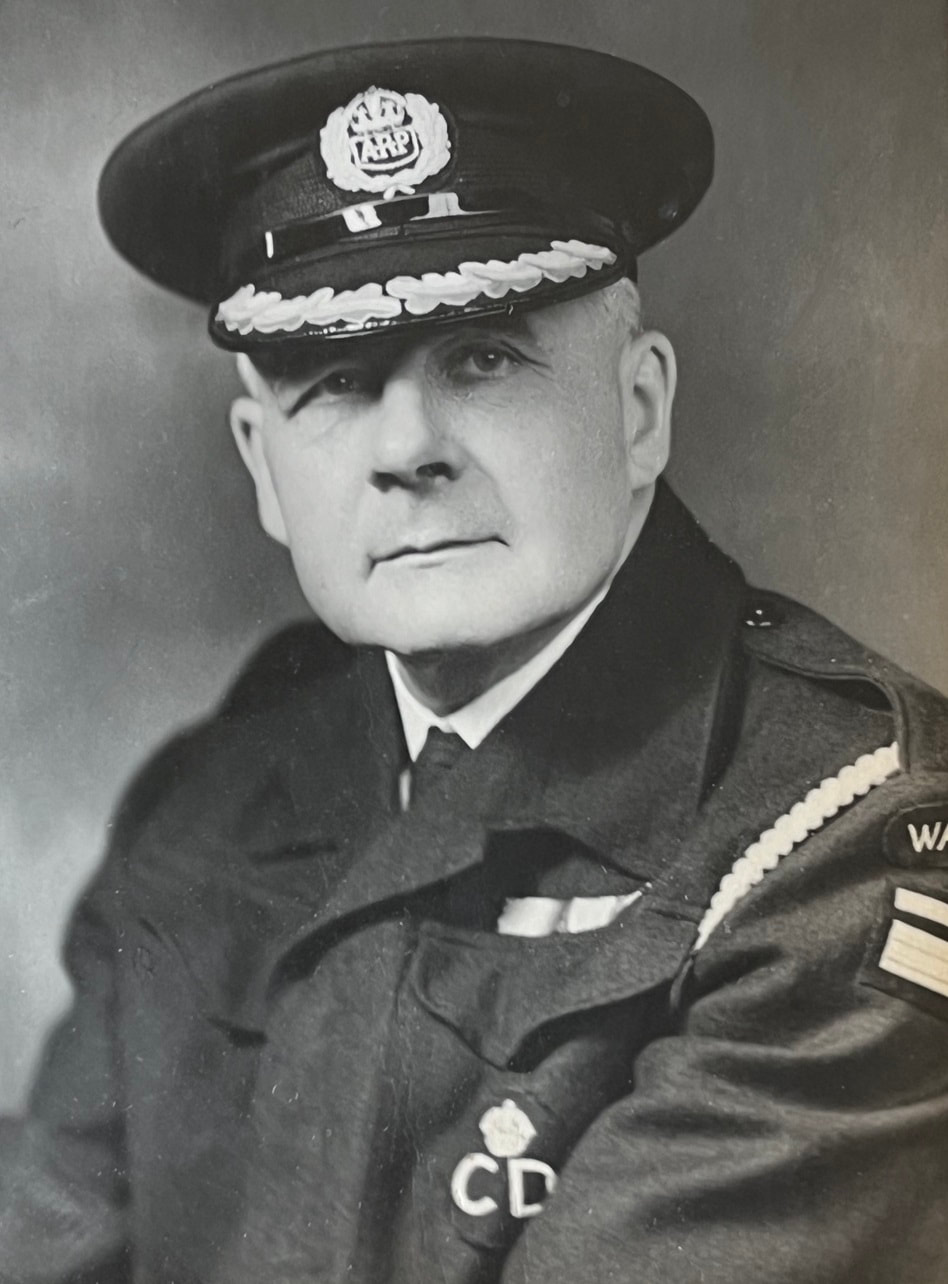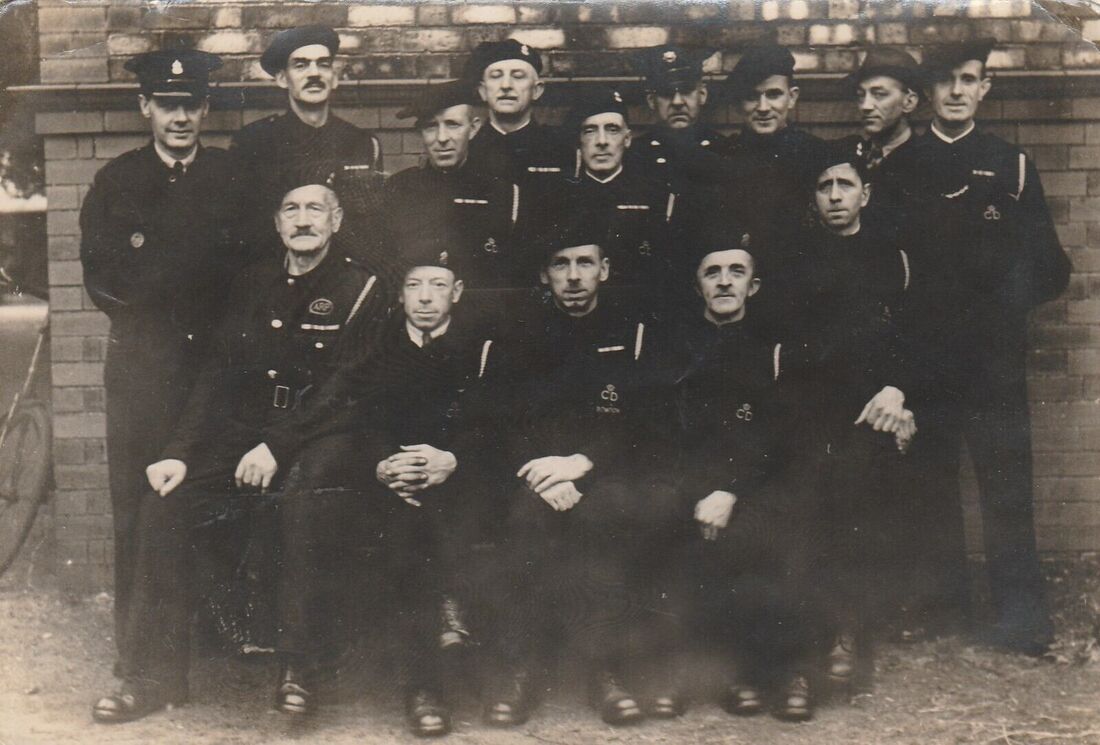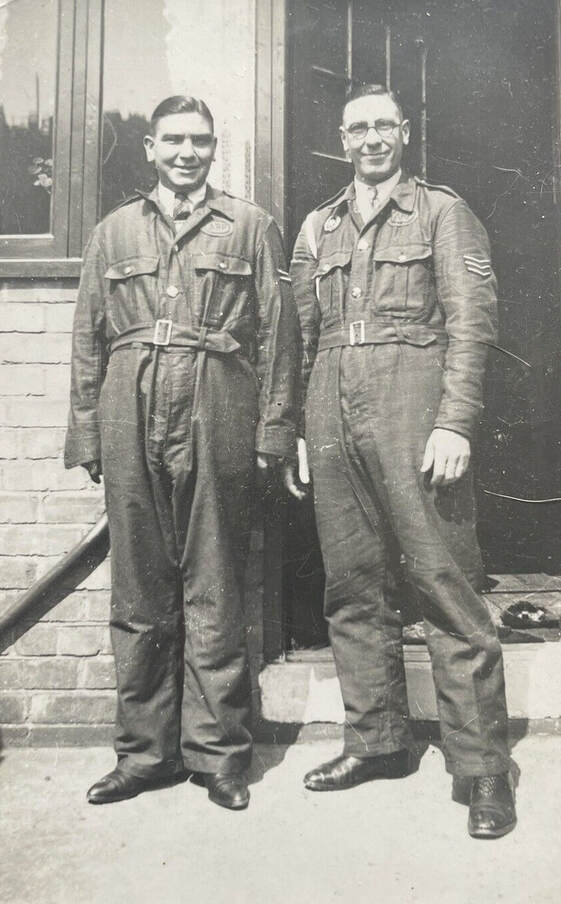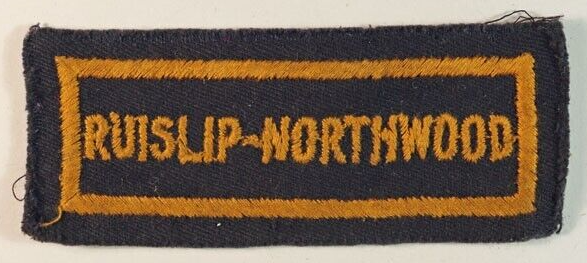|
A follower of this blog is after a specific style of oval ARP badge to complete an original uniform. There are three main types: embroidered, printed and woven. He's after the woven chain-style (see below) on grosgrain-like material (this is similar to the material that goes around a trilby). It looks a tad similar to embroidered but the style of manufacture is quite different.
If you happen to have one for sale, send me a message via the Contact page. UPDATE: the exact badge in excellent (possibly unworn - image below) condition was found by a visitor to this blog and has been bought by the seeker.
0 Comments
A photograph that it is believed shows the Chief Warden of Croydon, Alderman Anson Boddington J.P. He would later become the mayor of Croydon in 1943. His peaked cap and especially the ARP badge are quite rare to see.
Image courtesy of Roger Miles at Home Front Collection. An interesting group portrait of, I assume, wardens outside their post in 1943. Of interest is the chap far left; he is wearing a peaked cap to which he has applied his ARP badge on the front - a most unusual combination and rarely seen. Although one of the gents at the front has an area title on his battledress the resolution of the original photo isn't quite good enough to discern the location. The gentleman top row, fourth from right, is, I believe, attached to the fire services.
Two ARP volunteers wearing the early-war bluette overalls. Of interest are the chevrons - one with two chevrons and the other three chevrons; three chevrons usually denote an officer-in-charge and I'm not too sure what two chevrons represent. The chap on the right also appears to have a St. John Ambulance Association first aid badge above his right pocket. I'd say the chap on the left is probably wearing overalls a few sizes too large for him.
Area markings often go for good prices online as evidenced by the recent sale of this Ruislip-Northwood example which sold for £58.50 (incl. shipping).
|
Please support this website's running costs and keep it advert free
Categories
All
Archives
June 2024
|
|
|
Copyright © 2018–2024
|






 RSS Feed
RSS Feed